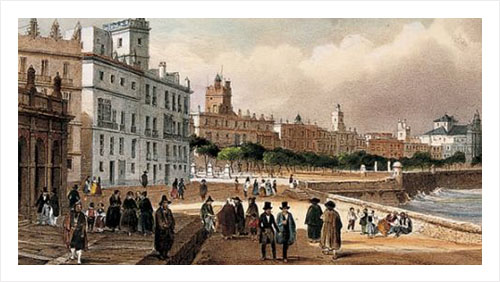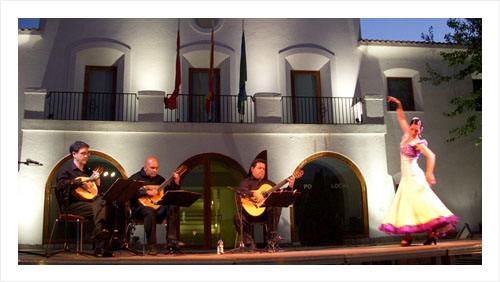- Inicio
- Biografía
- Música
- Discos
- Conciertos
- Repertorio
- iniciomenu
- Música Española
- Música de Cine
- Música Sudamericana
- Los Sonidos de la Pepa
- finmenu
- finmenu
- Galería
- Enlaces
- Contacto

This program commemorates the bicentennial of the Constitution of Cadiz, inviting us to take a journey
through the music of an era that forged the first constitution promulgated in Spain, during French occupation.
Sonatas, zapateados, seguidillas, tiranas, polos, tanguillos, fandangos, (spanish dances), are interpreted by
instruments such as mandolin Spanish, lute and guitar, as it did then.
OBERTURA - Francisco Javier García Fajer (1730-1809)
OLÉ DE LA CURRA - Anónimo
SEGUIDILLAS Y CANCIONES DE “LA SOLDADA” - Pablo Esteve (1730-1794)
TRIO Nº3 OP 4 - Francesco Molino (1745-1847)
VARIACIONES DEL FANDANGO ESPAÑOL - Félix Máximo López (1742-1821)
FANDANGO ANTIGUO - Anónimo
VARIACIONES OP. 81 - Mauro Giuliani (1781-1829)
SONATA OP 15 - Fernando Sor (1778-1839)
ZAPATEADO - Mariano Rodríguez Ledesma (1779-1847)
ALLEGRO EN RE MAYOR - Fray Manuel de Sostoa (1749-1806)
SONATA - José Lidón (1752-1827)
TIRANA - Pablo Esteve (1730-1794)
NOCTURNO Nº2 OP 38 - Francesco Molino (1745-1847)
ALLEGRO - José Ferrer (1745-1815)
SEGUIDILLAS DEL APASIONADO - Jacinto Valledor (1744-1809)
SONATA EN RE MAYOR - Mateo Albéniz (1775-1831)
PASSACALLE - Luigi Boccherini (1743-1805)
The Spanish Constitution of 1812 was enacted on March 19, the feast of St. Joseph in the city of Cadiz. Responding to the playful character of the Spanish, was immediately named La Pepa. Its historical importance is great, being the first Spanish Constitution, besides being one of the most liberal of his time.

The constitution provided for the abolition of the Inquisition, indirect universal male suffrage, national sovereignty, constitutional monarchy, separation of powers, freedom of the press, the distribution of land and freedom of industry, among other things.
After the Uprising of the people of Madrid against the French, which occurred on May 2, 1808, occurred in many areas a spontaneous phenomenon of resistance to the French who were grouped in so-called “Boards”. They realized that their union and grouping produce more effective.
On 25 September the same year was the Supreme Central Governing Board based first in Aranjuez (Madrid) and then in Seville. Its functions were to conduct the war and subsequent reconstruction of the state. The power vacuum situation, plunged into chaos in the Spanish administration, and the Boards of government were the only public body know how to manage the few mainland territories that remained outside the French control, mainly the south and east Spanish.
The boards, tried to maintain order and preserve the state until the restoration of the Bourbon dynasty in terms preceding the Napoleonic intervention. However, the lack of coordination between them, the absence of an institutional order and the power vacuum, leading to summon a Cortes, initially will meet in Seville in 1809. There were two possibilities: first, represented by Jovellanos, was the restoration of the rules of absolute monarchy, while the second involved the enactment of a new constitution.

After Seville, and the French advance, the courts moved to San Fernando, making its first meeting on September 24, 1810 at the Royal Theatre of the Courts. Subsequently, following an outbreak of yellow fever and the French advance, moved to Cadiz, whose insularity and support of the British Navy ensured the safety of the deputies assembled.
The Cadiz Constitution was not a revolutionary act, not a break with the past. Since the legality of the moment, who were the legitimate representatives, agreed. The events of that September 24, 1810 began with a civic procession, a mass and the strong request of the President of the Regency, Pedro Quevedo y Quintana, Bishop of Orense, the meeting that faithfully and efficiently fulfill their tasks.
The Trio Assai offers different formats and options based on budget and needs, with ability to customize the program with classics or popular music.

• CONCERT: The Pepa´s Sounds”. (Music around of the Spanish Constitution of Cadiz).
• SPECTACLE: The Pepa´s Sounds.
Spectacle of music and dance with possibility of 1, 2 o 3 dancers.
• COMPLET SPECTACLE: The Pepa´s Sounds.
Spectacle of music and dance with possibility of 1, 2 o 3 dancers and singer.
All options can be carried out with the background images projection with a power-point presentation, for which would require a projector.